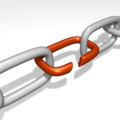
If I told you to change a light bulb and you had two hours to do it, you would probably spend most of the two hours. You’d assume I thought you needed to go the store, or that I wanted it done a certain way, and that I’ve thought hard enough about it that you should take the two hours.
In project management, this human phenomenon, that work tends to fit into the space assigned to it, is a problem. Creating factors of safety within project schedules often does not reduce the risk of finishing late.
The Critical Chain method was developed to produce greater certainty over project completion dates. When deadlines are the most important factor, this method should be considered by the project manager. It is similar in function to the Critical Path Method, but different in its methodology. It focuses more on the human element of project management than the Critical Path Method.
Background
Most people are influenced by one or more of the following human factors:
- Student Syndrome: Starting the task at the latest possible moment.
- Parkinson’s Law: Pacing the completion of the task throughout the full duration assigned to it.
- Multitasking: Working on multiple tasks simultaneously and therefore not being fully committed to any one task.
Traditional project scheduling would include factors of safety in each task (schedule and cost), which then encourages the project members to complete the task in the amount of time allocated to it. The likelihood of being late is only marginally improved by adding large factors of safety.
What is the Critical Chain?
Purely by definition, the Critical Chain is the same as the Critical Path in traditional project management. It is the longest path of tasks to project completion. But in its calculation and methodology, it is a completely different method. You must essentially use one method or the other, or both in parallel if you have the time.
How to Implement the Critical Chain Method
To use this method, a project manager performs the following sequence of events.
- Develop the Work Breakdown Structure (an itemized list of tasks within the project).
- Determine start and end dates at the 50% level (50% probability of exceeding or meeting)
- Determine start and end dates at the 95% level (95% probability of meeting)
- The difference is the buffer. Add all of the buffers together and add it to the end of the project as its own task. This is the project buffer.
- Inspect the non-critical path tasks. Insert buffers and ensure that the buffers do not impact the critical chain. If they do, add an additional buffer into the critical chain. These are called feeding buffers.
- Perform resource leveling (i.e. ensure the resources are available for each task). Insert buffers in each task to account for the availability of resources. These are called resource buffers.
The completion date determined after each set of buffers is inserted, is used as the project completion date and communicated to stakeholders.
The project team is aware of the buffers but is driven by the task durations which are the 50% estimates.
Project Tracking
This is where the power of the method lies. The project manager tracks the project by determining how much of the project buffer has been consumed relative to the progress of the project. In an ideal world, the entire buffer would be consumed at the end of the project and the completion date would be met. But in the critical chain method, project members are given completion dates that do not include the buffer, and if they are late, the project deadline is still protected.
Even though they are aware of a buffer, the schedule presented to them forces them to act with a sense of urgency.
Further Reading
If you would like to know more about the Critical Chain Method, here are a few resources to investigate:
- Critical Chain Method, from Goldratt, the inventor of the method.
- Critical Chain, from amazon.com, the hard copy book from Eliyahu Goldratt.
- A good overview, including examples.











Leave a Reply